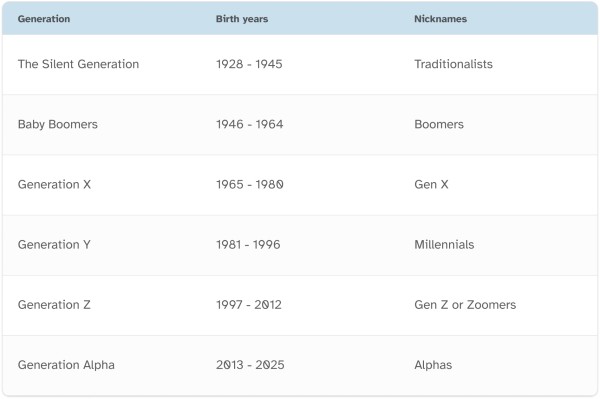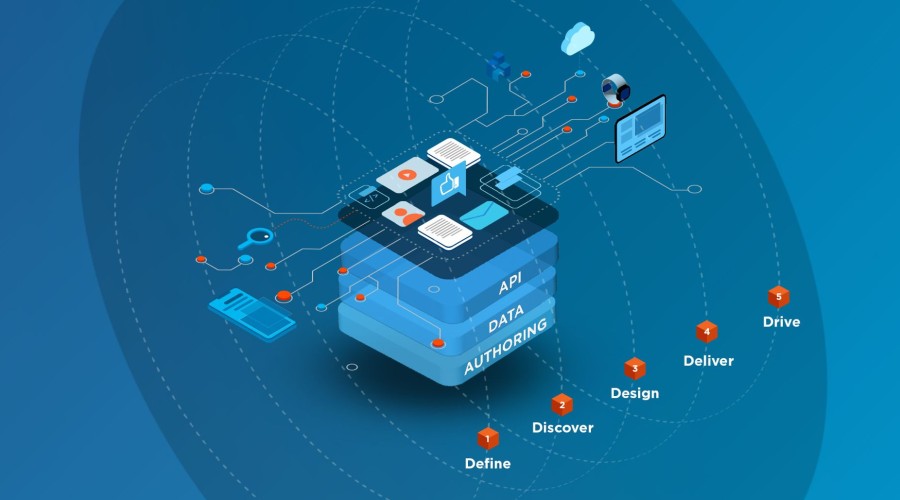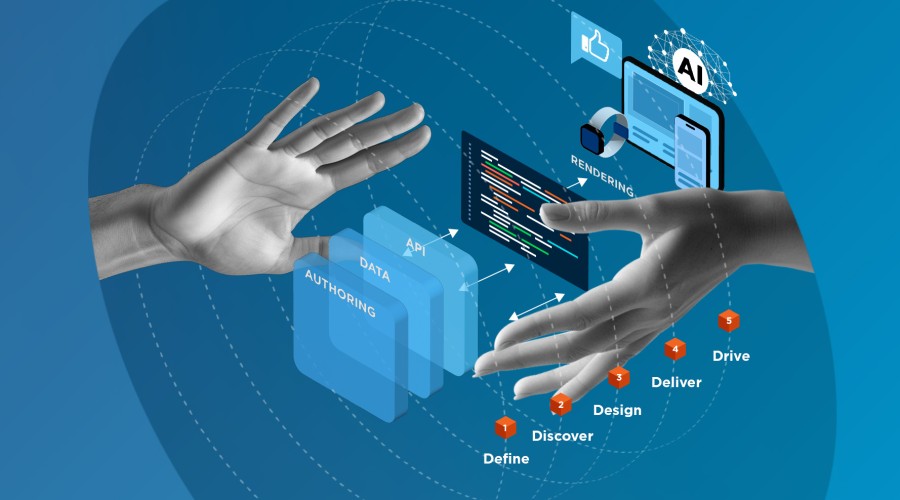Membership organisations by their very nature bring together diverse people around a shared interest. But in a world where different generations use digital very differently, how can membership bodies create experiences that work for all?
Highly successful membership bodies create communities beyond learning, mentoring, certifications, and events. The best ones bring together a multitude of people with diverse interests and levels of motivation within a particular field and facilitate deeper connections and conversations. This empowers people to step up and lead, to create new topics, interactions and develop their own stories within and about your membership organisation and contribute to its growth.
One of the most powerful elements of a successful membership community is its ability to influence, motivate, educate and engage younger members or prospects who are perhaps new to the field and/or less enthused.

Potential membership journey for a younger member
Creating a tribe
Like all good communities or groups, it’s essential for a membership organisation to become a ‘tribe’ with a multiverse of interest groups and leaders. It needs to be inclusive across different cultures, demographics (often continents) and generations. Seth Godin (in his book Tribes) famously argues that ‘now is the right time to start a movement - to collate a tribe of people with common interests and achieve the unimaginable’. He claims there are untapped tribes everywhere, all looking for meaningful interaction and change.

But Millennials and Gen Xers are all different in their thinking and digital consumption behaviours. While Gen Xers champions the use of the Web and Facebook, Millennials are Insta and YouTube afficionados, while Gen Z thrive on Reddit, Snap and TikTok.
In this article, we will focus on the interesting generational gap that is emerging and how membership organisations can meet the diverse needs of all its members whatever their age or experience. Much like the age-old adage “It takes the whole village to raise a child,” nurturing collaboration and responsibility among different age groups can lead to a wholesome and more rewarding community. Proactive and empowered membership volunteers unlock new opportunities, open new channels and create niche areas of interest within membership organisations. This generates more choice of engagement and content across more channels.
The different generations
Generation X, who are the dominant generation in the workforce today, grew up with one of the fastest changes in technology ever where many used PCs and were early adopters of the Web and Apps. Millennials (Gen Y) got accustomed to instant gratification through apps like Uber, Deliveroo and Tinder. Gen Z quickly following suit, searching for news through influencers and TikTok.

However, it wasn’t just technology that created a sense of instant gratification. Career wise, Gen Z are growing up in a world disrupted like never before. Media and social media often recite Elon Musk who claims: “AI will end all jobs”. This is more than just a change to whether a 20-year-old will use a Website, Chat-GPT or Snap to engage with a media, content or a membership body.
AI will shake up the world of work AI brings a paradigm shift effecting the field of work, workers and professions through its abilities to automate, augment and do work ‘automatically’. The challenge we see in certain membership bodies is “how do I convince the younger generation that this profession is viable?”.
Furthermore, certain professionally-focused member bodies are questioning whether Gen Z are going to invest time in studying and undertaking professional qualifications, particularly with their focus on purposeful work with good work-life balance. After all, why spend seven years studying for a profession and take exams if Machine Learning (ML) will do my job? There is a lot of education that membership bodies need to do around this.
How can we engage members from newer generations?
Designing membership experiences that resonate and enable all the generations has become more critical than ever before. Gen Z are maturing, and Alphas are about to hit the workforce within a decade. Alphas are growing up with next generation AI tools and Machine Learning (ML) across all professions, so it is imperative to consider the following:
- Set your goals and research success - Members stay with you beyond the lifecycle of a normal user experience or interaction, so it imperative to hone the member experience to keep the relationship fresh, relevant and rewarding. Have you defined who the new generation of members are and researched how they are likely to engage with your institution? What keeps that generation up at night? What engages them? Explore the future lifecycle of the member experience for each generation. This could include changes to your courses, events, content and mentoring offers they may take. Are you tracking tangible benefits they may receive from being members such as cost savings, convenience, incentives and life changing experiences? This makes it easy for members to justify their membership.
- Bring the tangible benefits to life – Through storytelling, you can lead a tribe so members share knowledge and successes that appeal to people ‘like them’. By segmenting your generations by different demographics you can bring stories to life. This will communicate member value around the different facets of learning, mentoring, friendships, career progression, events and advancements of members within and outside of the membership body. If you were to develop microlearning content that is well consumed by Gen Z (for example) and contributes to their exam success, you might want to bring this life through a story. This would appeal to the newer generations, especially if it was promoted through the right channels and personalisation on your website.
- Single customer view (SCV) - Do you have a clear understanding of you audience and a defined pathway as their relationship deepens and becomes richer with you? Using SCV you can gain insights into how members behave and what they consume. Then you can use this data to enrich their experiences. This is particularly important across the different cohorts and generations. Beyond analysing and measuring members through SCV dashboards, you could further enhance your insights through tribe ‘health-checks’ — do you listen and measure their temperature and change accordingly?
- Gamifying member journeys and experiences – The principles of Service Design will enable you to map out the experience of campaigning, converting and onboarding new members. It will also help you in ‘servicing’ member needs through the various products, platforms and engagement types your membership body provides. Utility, usability, accessibility and speed are clearly rudimental in a member journey and are a given. But what can be done to push member experiences even further? Using tiers to rate members according to volunteering, news contribution, storytelling and mentoring is a great way to create a sense of friendly competitiveness among members. Awards, physical events, promoting and championing high achieving members publicly is another way to ‘gamify’ the member experience although in a more classic sense.
- Channel/content design – We mentioned Service Design in the bullet above. Member experiences will change and adapt based on the different mediums and engagement paradigms that exist. The first company I worked for as a Learning Designer traditionally created all their content using VHS in classrooms. My role was to take content, make it into infographics and turn it into interactive Macromedia Flash Web interfaces. Today, we’re spoilt for choice on how content can be displayed – from audio, to text, all the way to video, infographics, VR and even through generative AI.
Build and mobilise the 'tribe'
Building ‘one tribe’ for your membership organisation that’s composed of multiple small tribes is one way of thinking on how to build up your membership body to encompass and engage the future generations. While content, technology and even systems and processes have a role to play in the success of your membership organisation, it’s important to mention that you need to get your ‘whole village’ onboard to raise the ‘children’ of tomorrow.
Noah Yuval Harari, one of the leading anthropologists, futurists and historians of our generation summarised this very well in his book Sapiens: “It takes a tribe to raise a human. Evolution thus favoured those capable of forming strong social ties.” What we can see here is a case to mobilise not only the membership body itself, but also the members to contribute and champion the preparation, onboarding and engagement of future members – with a view to understanding their distinct wants and needs.

This does beg the question though: what can be done to engage and retain the existing members? Stephen Covey, the author of 7 Habits of Highly Effective People, might have the answer. He always stated that the most satisfaction he ever had in his career was from mentoring and teaching others. How you go about implementing this in your organisation and measure the success can only be done through continuous research, setting KPIs and monitoring the data. Bringing the word ‘social’ in here, albeit through social media, instant messaging, events, web forums are all valid channels.
If your organisation is looking to learn more about how the principles of Service Design can help with engaging its members, contact us now and find out how we might help.




